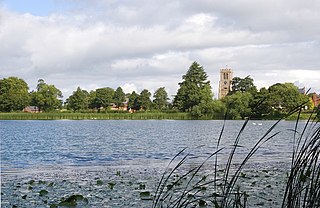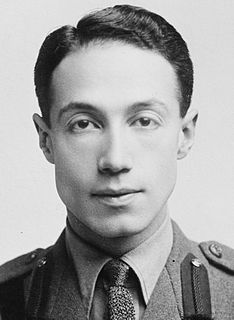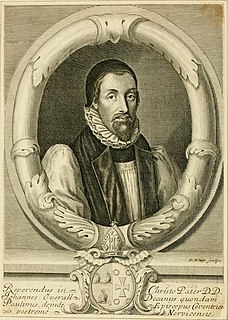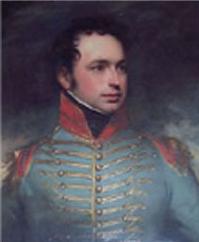The Norwich School of painters was the first provincial art movement established in Britain.

William Taylor, often called William Taylor of Norwich, was a British essayist, scholar and polyglot. He is most notable as a supporter and translator of German romantic literature.

James Wyatt was an English architect, a rival of Robert Adam in the neoclassical style and neo-Gothic style.

Sir David Hanmer, KS, SL (c.1332–1387) was a fourteenth century Anglo-Welsh Justice of the King's Bench from Hanmer, Wales, best known as Owain Glyndŵr's father-in-law and the father of Glyndŵr's chief supporters.

Richard Westall was an English painter and illustrator of portraits, historical and literary events, best known for his portraits of Byron. He was also Queen Victoria's drawing master.

George Horne was an English churchman, academic, writer, and university administrator.
Richard Grey D.D. was an English churchman and author, archdeacon of Bedford from 1757. He is now remembered for his Memoria Technica, a work on a memory system.

Sir Philip Albert Gustave David Sassoon, 3rd Baronet, was a British politician, art collector, and social host, entertaining many celebrity guests at his homes, Port Lympne Mansion, Kent, and Trent Park, Hertfordshire, England.

Humphrey Prideaux was an Cornish churchman and orientalist, Dean of Norwich from 1702. His sympathies inclined to Low Churchism in religion and to Whiggism in politics.

Robert Dormer, 1st Earl of Carnarvon was an English peer. He was the son of Sir William Dormer, and thus a grandson of Robert Dormer, 1st Baron Dormer. His mother was Alice Molyneux, daughter of Sir Richard Molyneux, 1st Bt. and Frances Gerard. Dormer received the title Baron Dormer at the age of six and on 2 August 1628, at age 18, he was raised to Viscount Ascott and was created Earl of Carnarvon.
Richard Courtenay was an English prelate and university chancellor, who served as Bishop of Norwich 1413-15.

John Overall (1559–1619) was the 38th bishop of the see of Norwich from 1618 until his death one year later. He had previously served as Bishop of Coventry and Lichfield, as Dean of St Paul's Cathedral from 1601, as Master of Catharine Hall from 1598, and as Regius Professor of Divinity at Cambridge University from 1596. He also served on the Court of High Commission and as a Translator of the King James Version of the Bible.

Lewis Bagot was an English cleric who served as the Bishop of Bristol, Norwich, and St Asaph.

Colonel Henry George Herbert, 2nd Earl of Carnarvon DL, FSA, styled The Honourable Henry Herbert from 1780 to 1793 and Lord Porchester from 1793 to 1811, was a British peer, nobleman, and Whig politician.

The Dean of Christ Church Cathedral, Dublin is the senior official of that church, the cathedral of the United Diocese of Dublin and Glendalough in the Church of Ireland, and head of the Chapter, its governing body. A Dean has presided over Christ Church Cathedral since around 1539, before which the cathedral was a Priory under Augustinian rules, headed by a Prior, back to the time of Archbishop St. Laurence O'Toole. Aspects of the cathedral administration are overseen by the Cathedral Board, which the Dean chairs.
Sir John Herbert was a Welsh lawyer, diplomat and politician who sat in the House of Commons at various times between 1586 and 1611. He was Secretary of State under Elizabeth I and James I.

The Martineau family is an intellectual, business and political dynasty associated first with Norwich and later also London and Birmingham, England. The family were prominent Unitarians; a room in London's Essex Hall, the headquarters building of the British Unitarians, was named after them. Martineau Place in the city's Central Business District was named in their honour.
The Very Rev David Herbert Somerset Cranage was an Anglican Dean in the second quarter of the 20th century.

Samuel Smith was an English clergyman and academic administrator at the University of Oxford.













